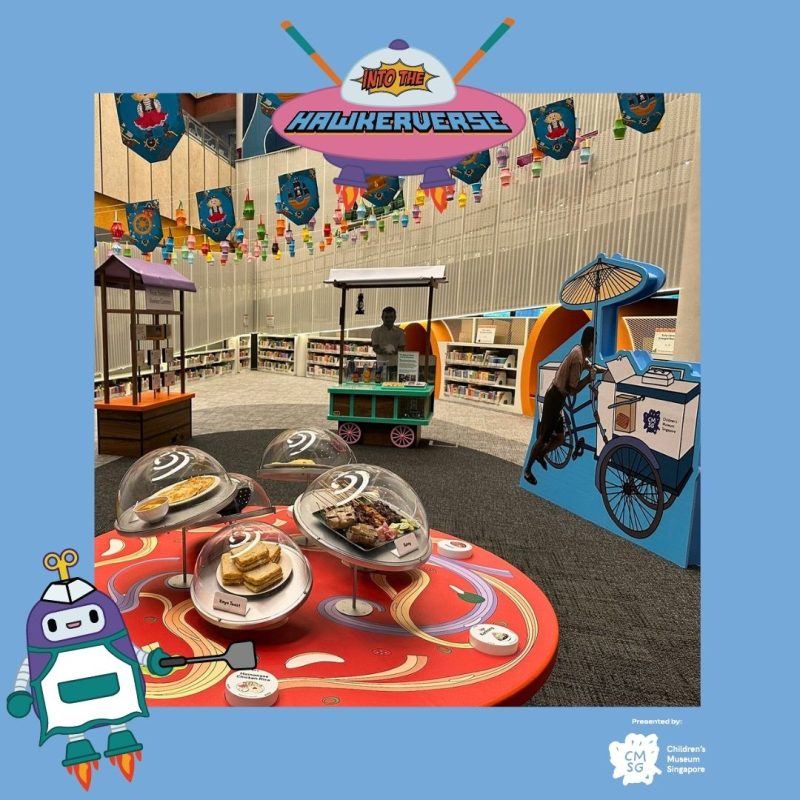At the Children’s Museum Singapore, young visitors are collaborators, co-curators, and catalysts for change. Since opening its doors in December 2022, the museum has positioned children at the heart of its mission, shaping exhibitions and programmes through genuine, ongoing partnerships with schools and youth communities.
At the recent Museums & Schools Summit the Children’s Museum Singapore team shared their approach.
As Singapore’s first museum dedicated to children under 12, the Children’s Museum Singapore has embraced an innovative approach: designing museum experiences not just for children, but with them. From its earliest planning stages, the museum actively sought input from young voices and their families. Over 1,000 parents and children participated in surveys to inform decisions about exhibition themes, museum branding, and even the design of the museum’s mascot and logo.
This collaborative ethos is evident throughout the museum. From the sensory-rich “Play Pod” for visitors under four, to themed rotating galleries and vibrant interactive exhibits, every element is carefully crafted with children’s needs, curiosities, and capacities in mind.

A standout case study of this approach is the museum’s current exhibition, Into the Hawkerverse, which celebrates Singapore’s beloved hawker food culture. Aimed at children aged 5–9, the exhibition explores the sights, sounds, and smells of hawker centres through immersive, play-based installations.
Rather than assume what might interest their audience, the museum team—led by curators such as Mishelle Lim—conducted extensive consultations with children. From observing how children played with trial exhibits to role-playing sessions where kids imagined future hawker centres, the feedback was vivid, detailed, and surprising.
Their contributions were not merely symbolic. Children’s drawings, ideas, and even storylines directly influenced exhibition content. Young voices shaped the puppet theatre scripts, inspired interactive elements like mock hawker stalls, and even imagined futuristic food robots—with one thoughtful child noting that machines might one day serve food, but “robots can’t replicate the love and care that hawkers put into cooking.”
Through dynamic collaborations with local schools, the museum extends the impact of co-creation into education. One such partnership with Stamford Primary School blended the school’s “Values in Action” programme with the museum’s curatorial goals. Students weren’t just visitors—they were creators, interpreters, and ambassadors.
The collaboration included scriptwriting for puppet shows, filming promotional videos, and even recording a catchy jingle used in the exhibition’s launch campaign. Museum staff provided workshops, training, and mentorship, helping students develop key competencies such as creative thinking, communication skills, and civic literacy.
Children were given the autonomy to sign up voluntarily, and the enthusiastic response reflected the power of this participatory approach. Many students described the experience as not only educational but deeply empowering.

Inclusivity is a cornerstone of the museum’s mission. A collaborative video shoot brought together children from mainstream and inclusive preschools, highlighting the importance of accessibility and representation. Throughout the exhibition, children of all abilities are invited to participate meaningfully.
Children who were part of the programme frequently expressed a strong sense of pride and ownership. As one young participant described, “At school, they ask us to sit down and explain everything. But at the museum, they let us play and we learn by ourselves.”
According to Asmah Alias, the museum’s director, the Into the Hawkerverse exhibition marks just the beginning of a broader journey into community-led, child-centered curation. By embedding young voices into every layer of the museum—from ideation to exhibition delivery—Children’s Museum Singapore is redefining what museum engagement can be.
Head of Museum Experience, Kase Zheng, adds that children’s involvement in exhibition planning and marketing not only deepens their connection to museums but enhances the learning journey itself. This participatory model fosters a generation of confident, civically engaged young people who see themselves reflected in cultural spaces.
The Children’s Museum Singapore offers a powerful blueprint for how museums can reimagine their roles—not just as spaces of learning, but as platforms for empowerment and collaboration.
As this vibrant case study shows, when museums listen to children, they don’t just build better exhibitions—they build a better future.



